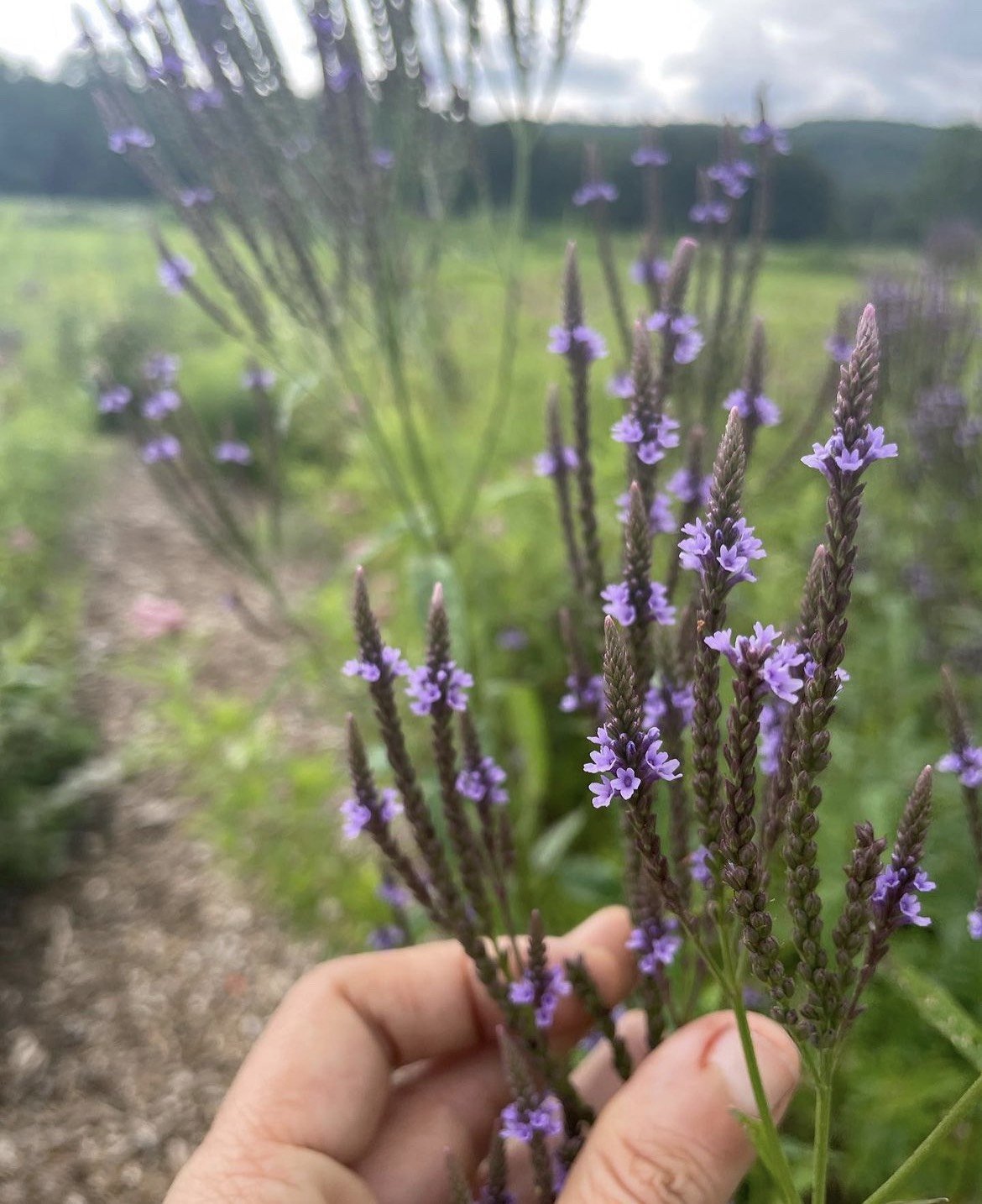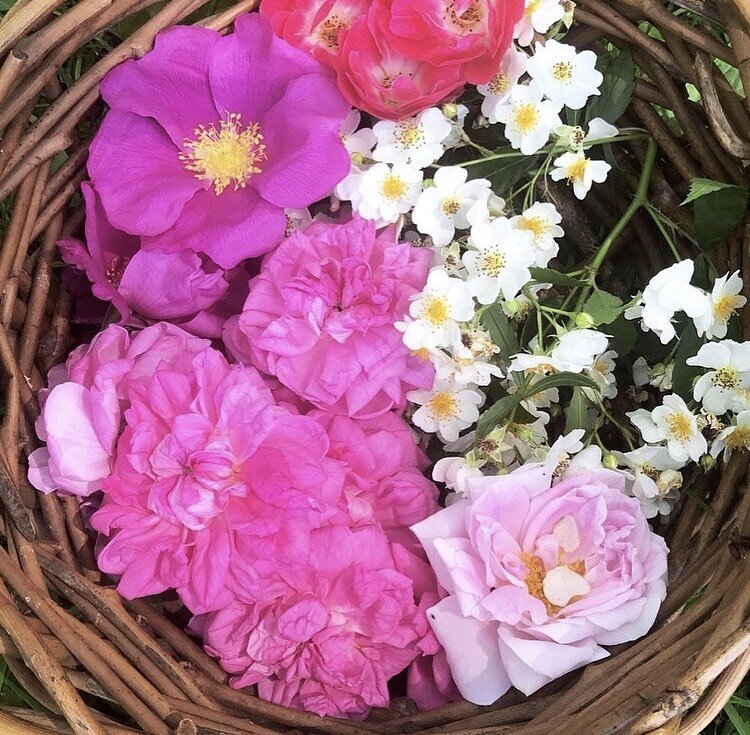Gut Heal Gummies & Gut Heal Tea
Traditional medicine systems the world over agree that digestion is the root of health. Sadly, our modern population is plagued with digestive issues- gut dysbiosis, IBS, Leaky Gut, food sensitivities, poor digestion, malabsorption and the myriad of autoimmune disorders which can stem from the inflammation that often arises from a leaky and irritated gut. Gut Heal Tea and Gut Heal Tea, are both great ways to repair the micro-injuries that inflame and irritate the gut from inflammatory foods, allergens, chemicals in our foods and environments, stress and more.
Sassafras Leaf Honey
I'm deeply enamored by the fall foliage, but even more so when I can make medicine with it. The Sassafras tree (Sassafras albidum) puts on such a show in the fall and, although the essential oils in the leaves are certainly more concentrated in the summer, the mucilage is still potent in the fall and lots of their aromatic and unique flavor is still present. I love gathering them now- when the trees are about to drop them anyway and they're in their full autumnal glory.- and make a potent and delicious herbal honey with them. You can even gather recently fallen leaves for medicine!
The Healing Power of Purslane
Purslane (Portulaca oleracea) is a phenomenal food as medicine enjoyed in cuisines the world over from China to India to the Mediterranean, Levant, North America, Mexico, Australia, and beyond. It’s a common weed on every continent except Antarctica and everywhere humans have encountered this plant, they’ve woven it into their culinary traditions.
The Brain-Boosting Properties of Lion’s Mane Mushroom & Making a Medicinal Mushroom Double Extract
Lion’s Mane Mushroom is a powerful nootropic, has a special talent for helping heal damaged nerves, supports mood and helps alleviate depression, and possesses the famous beta-glucan polysaccharides that make medicinal mushrooms such potent immunomodulators.
The Winter Herbal Medicine Cabinet
In thinking about herbs and preparations to have on hand during the winter months I find it helpful to think about classes of herbs by way of their herbal actions. Here are a few herbal actions to consider when picking herbs for your home winter apothecary and some of my favorite herbs to have on hand (but these lists are not at all exhaustive):
Rest & Digest Bitters and the Medicine of Blue Vervain
In the herb world there's kind of an inside joke that's basically this- some people are "Blue Vervain" people, meaning they're pretty Type A, love lists and order and control (but often get stressed-out trying to control everything), tend towards holding stress in their bodies- particularly the neck and shoulders- and are often a "work hard, play hard" type. In the Ayurvedic framework these are folks with LOTS of Pitta.
Honeyed Lemon Balm, Rose & Strawberry Jam
Rose season is quite possibly my most highly anticipated “plant season” of the year. Many of us bioregional herbalists mark the year in this way…April is Dandelion and Violet, May is Nettles, and Rose season here begins in June. Whether it’s Beach Rose growing wild on the coast, Wild Rose growing every which way with the brambles in the hedges, or a fragrant antique Rose growing in a hidden garden- I love them all.
Making Wild Herbal Sodas
Wild Sodas are a fun and easy way to make living, medicinal, naturally probiotic beverages that are made by wild fermentation- we don’t add any yeast- the wild yeast on the flowers and yeasts in the raw honey are what cause the fermentation! They can be made with 100% local ingredients, making them a wonderful example of “localvore medicine” that reflects the true terroir of the land and has a super small carbon footprint. I mostly make them in the warmer months, but they can be made year-round.
Herbal Vinegars, Oxymels & Spring Tonics
I first became interested in diversifying my apothecary with vinegar and honey-based preparations when, after a certain point, it started to feel like I was just dumping vodka on everything! And the more I began working with bioregionally abundant herbs, the more I wanted to start exploring bioregionally abundant menstruums (herbal vocab word for whatever you’re extracting into).
Barberry Medicine
Barberry (Berberis spp) is a medicine I truly feel all of us should know. This ubiquitous shrub is abundant, pervasive, and rich in a very special alkaloid extensively studied to have a whole host of antimicrobial properties, Berberine. This alkaloid gives Barberry its distinctive yellow roots and inner bark and is the same alkaloid that makes the famous Goldenseal so antimicrobial and gives it its golden-yellow color as well.
Savory Nettles & Ricotta Pie
All throughout the Mediterranean and SWANA region various iterations of this dish occur- the combination of greens, herbs, eggs, and some kind of cheese (often ricotta or feta) for the ultimate peasant food that's deeply nourishing and draws on seasonally and bioregionally abundant ingredients.
Sustainably Harvesting Conifer Resins & Conifer Resin Salve
Winter is a great time to work with and harvest conifer resin (also often referred to as pitch). It's much less sticky and viscous in the winter than other times, due to the cold temperatures, which makes it much easier to harvest! Locally, White Pine (Pinus strobus) is our most abundant conifer that produces resin and you can also find it in Balsam Fir (Abies balsamea) and Spruce species (Picea spp), with Norway Spruce (Picea abies) being our most locally abundant Spruce.
White Pine & Rosemary Nougat
At its most basic, nougat is a confection made with nuts, honey, and/or sugar, however it can also include egg whites, herbs, spices, dried fruit, and seeds depending on where it’s made. There are variations traditionally made throughout the SWANA region (Southwest Asia & North Africa), the Mediterranean, and southern Europe, and the name it’s most commonly known as in the US, nougat, comes from France.
Using Seasonal Flavors in Ferments for Health
Ferments are already medicinally active foods unto themselves and the additional medicinal herbs elevates them even further. I personally enjoy enhancing fermented vegetables with herbs and spices- kimchi, sauerkraut, and root vegetables in particular- choosing the blend based on what’s really in its prime and available in my garden, local farms, and woodlands and meadows.
Funghi sott'olio/ Italian Pickled Mushrooms
We’re having an amazing mushroom year, especially with Maitake/Hen of the Woods (Grifola frondosa) and when I have an abundance this is one of my favorite ways to put up the harvest! This is a traditional Italian way of preserving mushrooms- the way mushrooms on an antipasto plate are commonly preserved.
Elder Flower & Rose Wild Soda
I'm a big fan of wild sodas in the warmer months when I don't find myself as drawn to tea. They have a sweet, sour, and fizzy flavor similar to kombucha, which makes sense since they're both fermented and probiotic. Another cool thing about wild sodas is that they can be made with entirely local ingredients if you're using local honey!
Dandelion Flower Fritters with Wild Rose-Infused Honey
To me Dandelions equal spring and I’m always sure to make this fairy-fare recipe at least once a season, usually around Beltane. If you want to make these- be warned- Dandelion flowers have a fast season, usually blooming for just a few weeks, so my advice is not to wait if this recipe calls to you!
Nettle, Garlic Mustard & Roasted Red Pepper Pesto
As soon as spring arrives the plant I’m the most excited to greet each year is Nettles. They’re a true harbinger of spring, one of earliest greens, and a vitamin and mineral-rich herbal multivitamin that also delivers the highest amounts of protein per serving in the plant kingdom- upwards of 30%!
Roasted Dandelion Root Bitters
When it comes to the bitter flavor Americans are WAY off their game compared to so many other parts of the world where bitter herbal liquors after meals are the norm. Other than our coffee, which is the main source of bitter in our diets and is actually a perfect example of too much of a good thing (read on to understand this more), our diets are more or less devoid of the bitter flavor.
Rose Oxymel
This is one of my all-time favorite Rose preparations that’s a go-to for me all summer to cool down that fiery Pitta/Fire energy or when I just want a delicious and refreshing beverage that also makes me feel amazing! Oxymels are herbal drinks or sipping vinegars that are made by extracting herbs and/or fruits into a combination of vinegar and honey.



















